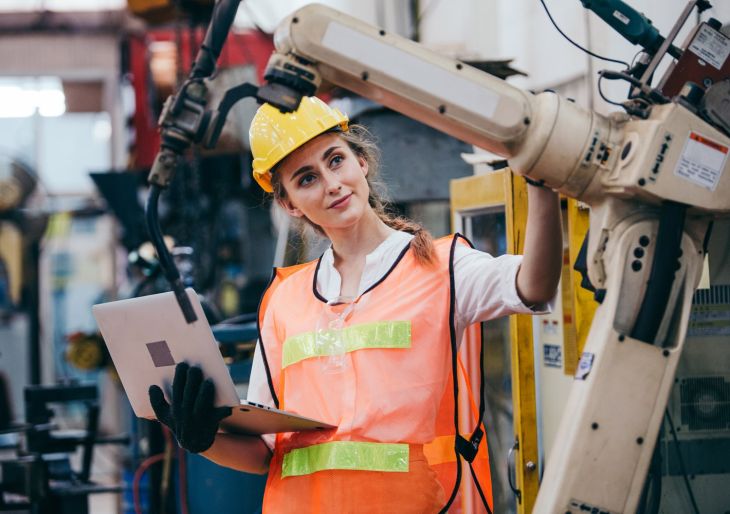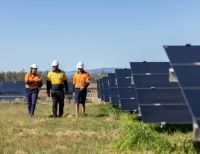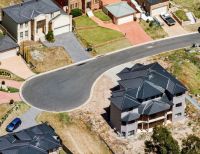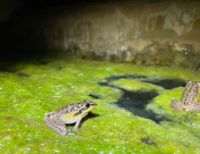3D printing is expanding our sustainable building horizons to the outback and beyond
3D printing processes and building materials can create more sustainable construction in environments as diverse as outback Australia and outer space.
3D printing and robotics are changing the way we do construction. Photo: Shutterstock.
A UNSW researcher is pairing traditional building techniques with emerging digital technologies to transform the way we build to contribute to sustainable futures. Dr Kate Dunn from the School of Built Environment is researching how robotics and digital fabrication, such as 3D printing, can lead to more sustainable construction.
“I want to build houses with robots and use materials from the [construction] site,” the architectural designer says. “We're looking at really traditional vernacular architecture [that uses local materials and traditional techniques], like mud-brick houses, adobe houses and sustainable materials like hemp.
“We’re researching how we can adapt some of those processes, but then optimise them using robotics and new technologies, such as large-scale 3D printing.”
Obstacles to building on the Moon and Mars
Dr Dunn’s research into old-world techniques has reach, across time and space, quite literally. In 2021, UNSW Sydney and Melbourne-based 3D-printing company Luyten signed a memorandum of understanding to research a project that spans rural and regional New South Wales, the Moon and Mars.
Dr Dunn, together with Associate Professor M. Hank Haeusler, Director of Computational Design (CoDe), and Master’s student Alex Tohidi will research the material processes and optimal design for building in remote areas, including in space, as part of the partnership.
One of the most significant obstacles for building in remote areas, including on the Moon is the cost associated with transporting machinery and materials, says Luyten’s CEO Ahmed Mahil.
"3D printing building components using site-specific materials is one way to circumvent this," says Dr Dunn. "Computer scripts can direct the 3D printing of complex architectural structures made from materials, such as clay and soil, even regolith, a material found on the Moon’s surface."

Regolith is a material found on the Moon’s surface and can be used in 3D printing. Photo: Shutterstock.
From outback origins…
The project has begun testing Earth materials gathered from its test site, Fowlers Gap Arid Zone Research Station. The sheep-station-turned-research-project is located on arid land in western NSW.
Research on birds, kangaroos, reptiles and other flora and fauna has been carried out as well as studies on the management of the arid zone, soil conservation, solar energy and astronomy.
Following their initial site visit, Dr Dunn and her team of higher degree research (HDR) candidates have begun testing the site material for feasibility: “How sticky it is, the clay and sand composition, the shrinkage and drying times, how well it adheres to itself for building, how well it holds its own shape.
“The materials out there are great – so you could potentially harvest straight from site and then build on-site,” she says.
The research looks at the effect of introducing fibres, such as hemp, straw and bamboo, to optimise the material for construction. These material considerations will impact their approach to form optimisation.
Research assistant and former Master’s student Charlotte Firth has been working on the project as well as Dr Dunn’s Advanced Digital Fabrication undergraduate students who were briefed with creating a design solution for building in remote regional Australia.
“One of my philosophies around being an academic is getting students involved with the research process early on,” she says. “Watching academics make mistakes, hit dead-ends and then reboot is a really integral way for students to become confident adult learners and researchers, I think.”
Subsequent site visits will allow the team to scale up their experiments and ultimately identify the optimal design and material consistency. The team will then adapt their findings to suit conditions in different remote sites.
We have (technological) lift-off
Luyten is developing a compact 3D printer able to print large-scale complex geometric structures and cope with rough terrain.
Its lightweight construction and robotic technologies make it ideal for transportation to remote areas as well as its built-in capability to produce designs of up to nine by 12 metres, says Mr Mahil.
“The beauty about Luyten’s printer is it can unfold itself, like a transformer, and whatever fits underneath that frame, you can fabricate completely autonomously via satellite with the right script,” A/Prof. Haeusler says.
The project will also explore the potential to use UNSW’s robotic technologies as part of its scope.
These material and design processes will prove invaluable for addressing housing issues in remote Indigenous and fly-in-fly-out communities, those living in extreme climates, and working in disaster zones, such as earthquake-prone areas, says Dr Dunn.
Instead of having to freight in concrete, gravel and other heavy materials and machinery, the materials available on-site and robots can do the heavy lifting, so to speak, she says. Using site-specific materials means if communities fold, the materials can just be returned to the Earth.
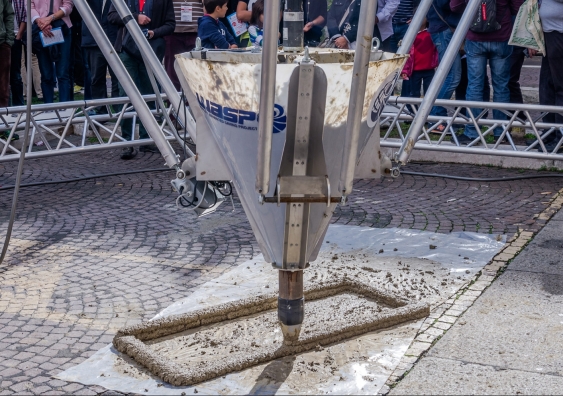
3D printer in action using cement and only guided by computer programs. Photo: Shutterstock.
“Australia's perfectly suited to this. It’s hugely sustainable,” Dr Dunn says. “The biggest problem with those traditional processes is that they’re super labour-intensive. But if we can use technology to speed those processes up, it becomes a much more affordable and feasible means of building things in Australia and around the world.”
Dr Dunn’s interest in material processes and creative approaches to making is grounded in her craft background: she is a ceramicist with a PhD in architecture. But if 3D-printing buildings seems like something of a leap, for Dr Dunn it only exemplifies the transferable nature of material and design thinking.
Her research spans diverse disciplines, from medicine (3D printing children’s bones to train paediatric surgeons) to marine ecology (designing and building habitats, in collaboration with Gabriel Undery from the Design Futures Lab, for endangered seahorses and seagrass under threat from climate change). She’s driven to reduce our environmental footprint.
“In my lifetime, climate change has become a very present problem. I feel like it is the most important problem [we have] to deal with. And so sustainability has to be inherent in everything we do now,” Dr Dunn says.
“As a culture, as a society, as a species, we used to do things really sustainably. And then the industrial revolution happened, and we thought that automating and consuming was the only strategy. But there is this incredible, deep knowledge in human cultures that if we apply it and respect it, it's really useful with advancing technologies.”
